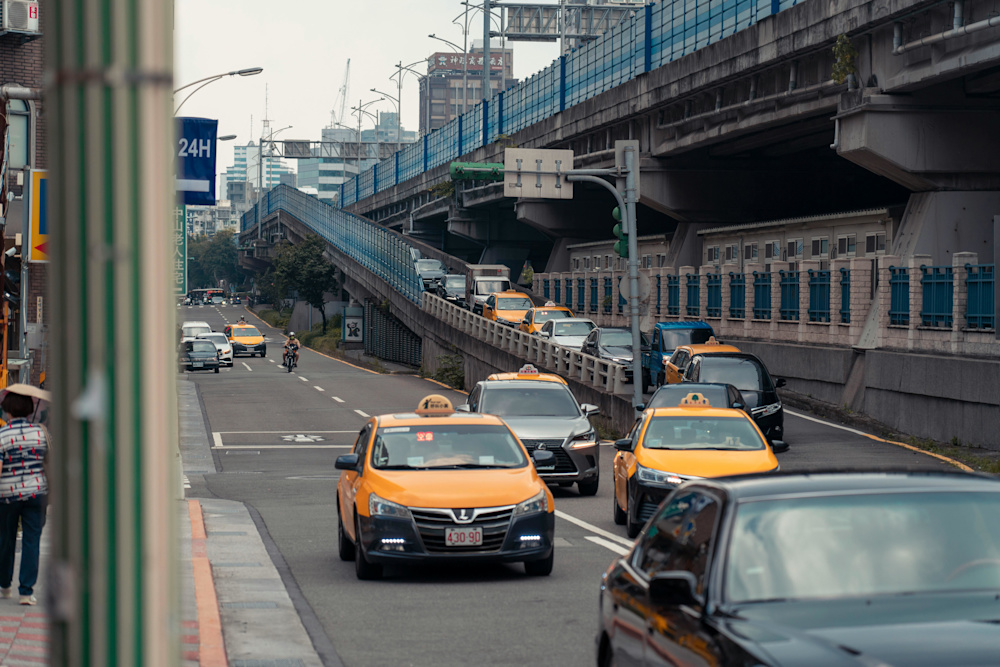Updated August 6, 2025
Driving in Japan Tips: A Guide to Japanese Traffic Rules for Foreigners
Driving in Japan gives you access to incredible destinations beyond what public transportation can reach.
Hidden mountain villages, scenic coastal routes, and authentic rural experiences await those ready to explore Japanese roads. But let's be honest: Driving in a foreign country can feel overwhelming, especially when traffic rules and cultural norms differ significantly from your home country.
This guide cuts through the confusion. We'll cover everything you need to know about driving in Japan as a foreigner, from essential documentation to cultural quirks that could save you from traffic violations.
Let’s dive in.
In this article: 📝
Driving Requirements in Japan: What You Actually Need
Before you can legally drive in Japan, you need proper documentation. The requirements depend on your residency status and home country.
International Driving Permits
Most foreign visitors can drive using an International Driving Permit (IDP) issued under the 1949 Geneva Convention. Key points to remember include:
The IDP must be obtained in your home country before arriving in Japan.
The IDP is valid for up to one year, regardless of the printed expiration date.
Once the IDP expires, the resident is required to stay at least three months outside Japan before their new IDP becomes valid. This rule is designed to prevent the abuse of this temporary right.
Several countries have special agreements that allow drivers to use an official Japanese translation of their license instead of an IDP, available through the Japan Automobile Federation (JAF) or authorized translation services. These countries include: Belgium, France, Germany, Monaco, Switzerland, and Taiwan.
Japanese Driver's Licenses
If you're sticking around Japan long-term, you'll eventually need to get a Japanese driver's license. The process varies dramatically depending on where you're from.
People from certain countries, including Australia, Austria, Belgium, Canada, Czech Republic, Denmark, Finland, France, Germany, Greece, Hungary, Iceland, Ireland, Italy, Luxembourg, Monaco, Netherlands, New Zealand, Norway, Poland, Portugal, Slovenia, South Korea, Spain, Sweden, Switzerland, Taiwan, the United Kingdom, and some US states (Colorado, Hawaii, Maryland, Ohio, Oregon, Virginia, and Washington) can just do paperwork thanks to reciprocal agreements.
Everyone else gets the full experience: written tests, practical driving exams, and potentially multiple trips to the licensing center if you don't pass initially.
Don't try to game the system by constantly renewing your IDP—Japanese authorities have caught on to this trick. This is why you now need to be outside Japan for at least three months before a new international permit becomes valid. Trust us, it's easier to just go through proper conversion.
For the complete breakdown of requirements and navigating the bureaucracy, check out our comprehensive guide on getting your driver's license in Japan.
Japan Road Rules: Key Differences That Matter
While Japanese traffic rules align with many international standards, several key differences can catch foreign drivers off guard.
Left-Hand Traffic and Basic Navigation
Japan uses left-hand traffic with the driver's seat on the right side of the vehicle. If you're coming from a right-hand traffic country like the US, this shift will be disorienting for the first few days, but most drivers adapt faster than they expect.
Take it slow for your first few drives, and use parking lots to practice without traffic pressure. Many rental companies let you familiarize yourself with controls before driving off the lot.
Critical Traffic Light Rules
Red means stop, always. Unlike some US states that allow right turns on red, Japan prohibits any movement during a red light unless a green arrow specifically indicates the permitted direction. This rule is strictly enforced.
At intersections, pedestrians always have priority. When turning right, yield to oncoming vehicles going straight or turning left. Wait with your turn signal on until pedestrians or oncoming vehicles pass completely.
The Railroad Crossing Rule
You must come to a complete stop before crossing any railroad tracks, even when no trains are approaching and the barriers are up.
This rule exists because trains run through incredibly narrow residential areas with limited visibility, and schedules are so frequent that the risk is genuinely higher than in many other countries.
Failing to stop can lead to hefty fines, points on your license, and potential complications with rental agreements. So make it a habit to stop completely, look both ways, and then proceed.
Speed Limits and Road Signs
When no signs are posted, stick to the default speed limits, which are 60 km/h for local streets and 100 km/h for highways. Road signs follow international standards, and major roads feature Japanese and English text.
Japanese "stop" signs resemble US "yield" signs but require a complete stop. When you see the triangular red and white sign, stop completely and check both directions before proceeding.

Essential Safety Requirements
Of course, all passengers must wear seatbelts. Children under 6 require appropriately sized child seats, and JAF recommends using them until children reach 150cm in height.
Unlike many countries, Japan permits child seats in front passenger seats, though it's not recommended for safety reasons.
As expected, Japan maintains zero tolerance for driving under the influence. Even minimal alcohol consumption exceeds legal limits, so never drive after drinking any amount of alcohol.
Driving in Japan vs America: Cultural Differences
Understanding the cultural differences will help you navigate Japanese roads more effectively and avoid common mistakes.
Parking Culture Differences
Japanese drivers predominantly use reverse parking as it makes for an easier exit and better visibility when leaving. All Japanese vehicles emit mandatory beeping sounds when reversing, unlike most American cars.
American drivers typically prefer forward parking and may initially find the constant reverse beeping annoying, but it serves an important safety function here.
School Bus Regulations
Japan permits passing school buses with hazard lights under specific conditions: verify safety and maintain speeds under 10 km/h. Simply slowing down without meeting the 10 km/h requirement may result in traffic tickets.
This contrasts sharply with American rules requiring complete stops when school buses display stop signs, so it’s good to remember this if you’re from the States.
Driving Behavior and Courtesy
Japanese drivers exhibit remarkable patience and courtesy that honestly puts most other countries to shame. They'll slow down to let you merge instead of speeding up to block you. In traffic jams, you won't hear constant honking. Drivers just sit there calmly.
This cooperative culture extends to zipper merging, which actually works here, and reverse parking, where drivers will patiently wait even if you're struggling with the angles. When someone flashes their hazard lights briefly, it's usually a "thank you" for letting them in.
That being said, this patience can work against you if you're used to aggressive driving. You might wait at intersections longer than necessary because you expect someone to cut you off, but they're actually waiting for you to go first. It takes recalibration, but it makes driving way less stressful once you adapt.
How to Get Gas: Japanese Service Stations Explained
Japanese gas stations operate differently from many countries, with distinct service types and fuel options.
Full-Service vs Self-Service Stations
Full-service stations provide traditional Japanese hospitality. Enthusiastic attendants guide you to pumps with energetic directions, fill your tank, clean windows and mirrors, and sometimes provide interior cleaning supplies. While more expensive, they showcase Japan's renowned customer service.
On the other hand, self-service stations are increasingly common and cheaper. Simply follow the touch screen prompts to select fuel type and payment method. Most accept cash or major credit cards, though it’s good to note that rural stations often require cash.
Fuel Types and Color Coding
Japanese gas stations use color-coded nozzles, so it’s pretty easy to get the hang of things:
Regular unleaded (red nozzle): Standard gasoline
High octane/Premium (yellow nozzle): Higher grade fuel
Diesel (green nozzle): For diesel vehicles and trucks
Payment Considerations
Many stations, particularly in rural areas, don't accept overseas-issued credit cards, so always carry cash as backup.
Company-branded credit cards (Eneos, Shell, Mobil, Cosmo) often provide 2-3% discounts.
ETC Card Japan: Understanding Electronic Toll Collection
Japan's extensive highway network relies heavily on Electronic Toll Collection (ETC) systems for efficient traffic flow.
ETC Card Japan: Meaning and Benefits
An ETC card automatically pays expressway tolls using RFID technology, allowing passage through designated lanes at reduced speeds (20 km/h or less) without stopping.
Beyond convenience, ETC cards offer weekend, holiday, and late-night discounts and are a key part of life here.
How to Buy ETC Card Japan for Rentals
Most rental companies offer ETC card rentals for 300-550 yen per day. Toyota Rent-A-Car, Times Car Rental, and ORIX provide this service, though availability may be limited, so reserve in advance.
There are some restrictions to keep in mind:
ETC cards must accompany vehicle rentals: You cannot rent cards independently.
ETC cards are not available at locations where expressways or toll roads are absent, like remote islands.
You pay the accumulated toll fees when returning the vehicle.
How to Use ETC Card Japan
Insert the card into the vehicle's ETC device before starting your journey—seriously, never try to do this while driving. The slot is usually near the dashboard or rearview mirror, with a beep or light confirming proper insertion.
If you don't hear anything, double-check that it's seated correctly because a loose card won't work at toll plazas.
When approaching toll gates, look for lanes marked "ETC専用" (ETC only) or "ETC・一般" (ETC and general). Slow down to about 20 km/h: Don't blast through at highway speed, thinking it's like an automatic car wash. The barriers need time to register your card. If the barrier doesn't open, there's usually an intercom button for help.
Always remove the card when leaving your vehicle. ETC cards store personal information and payment data, so leaving one in a rental car is like leaving your credit card on the dashboard.

ETC Card Japan Price and Value
Paying 300-500 yen per day for an ETC card rental might seem like another rental fee, but it's worth it because it saves a lot of time.
While you cruise through ETC lanes at 20 km/h, cash-paying drivers sit in long lines fumbling for exact change. During busy periods like Golden Week, those cash lanes back up for kilometers.
On top of that, some highway exits around Tokyo are ETC-only with no cash option. Imagine reaching your destination only to discover you can't exit because you don't have an ETC card. You'd have to drive miles to the next cash-accepting exit, then backtrack on surface streets. That 300 yen rental fee suddenly seems reasonable.
Weekend and holiday discounts are bonus savings on top of convenience. For any significant highway driving, especially in urban areas, the ETC card pays for itself in time and stress savings.
Parking Systems and Payment in Japan
Japanese parking systems vary significantly from other countries, but understanding the basics simplifies the process.
Traditional and Modern Parking Methods
Ticket-based lots require taking an entry ticket and paying based on duration when leaving. Payment machines accept cash and sometimes credit cards.
Coin parking uses individual space meters where you pay at your specific numbered space.
Elevator parking represents a unique Japanese innovation where automated systems lift cars into storage towers. Simply drive onto the platform and let the system handle parking.
Ticketless systems use license plate recognition. Park, pay at central machines using your plate number, and leave without tickets or barriers.
Cost Expectations
Urban parking costs several hundred yen per hour in city centers, decreasing significantly in smaller towns where parking is often free.
Hotels typically charge flat rates (around 1,000 yen per night in cities) or offer free parking outside major metropolitan areas.
Car Insurance and Accident Procedures
While nobody wants to think about accidents, they can happen, especially when you're still getting used to driving on the opposite side of the road. Knowing what to do can turn a stressful situation into something manageable.
Immediate Response Steps
First things first: Don't panic. Move your car to a safe spot if drivable, and throw on your hazard lights immediately. Japanese drivers are patient, but a car blocking traffic is still a safety hazard.
You must call the police (110) even for tiny fender-benders with zero injuries. This isn't optional, and trying to "work it out between yourselves" can get you in more trouble later. If anyone's hurt, call an ambulance (119) first, then police.
Take photos of everything, like cars, intersections, the damage, and license plates involved. Japanese insurance companies love documentation, and photos can speed up claims significantly. Exchange information with the other driver, but don't admit fault or apologize excessively. Just stick to the facts.
Japanese police are incredibly thorough with accident reports. They'll measure everything, take detailed statements, and create diagrams that look like engineering blueprints. It takes time, but this thoroughness usually works in everyone's favor with insurance.
For more insurance guidance and information on what coverage you may need as a foreigner, check out our detailed article on expat car insurance in Japan.
Communication Assistance
Language barriers during accidents can turn a stressful situation into a nightmare.
If you can't communicate effectively, don't try to tough it out. Show emergency contact information to nearby people or first responders right away. Most Japanese people will help in emergencies, even with limited English.
Most rental companies provide 24-hour support with interpretation services. Save that number in your phone before you start driving, not after you need it. Some companies have English-speaking staff who can talk directly to the police on your behalf.
Consider downloading a translation app with offline capabilities, or keep an emergency phrase card in your glove compartment. Having "I don't speak Japanese well. Please help me contact my rental car company" written in Japanese can bridge the communication gap when stress affects your thinking.

Practical Tips for Successful Driving
Beyond understanding the rules and regulations, several practical strategies can make your driving experience in Japan smoother and more confident. These tips come from the real-world experiences of foreign drivers who've successfully navigated Japanese roads.
Education and Preparation Resources
The Japan Automobile Federation (JAF) publishes comprehensive English-language driving guides that go way beyond basic online information. These include real scenarios, common foreign driver mistakes, and quiz sections to test your knowledge. You can pick them up at major bookstores or order online.
If you're new to left-hand driving or want to build confidence, Japanese driving schools offer refresher courses for licensed drivers. Yeah, it might feel silly going back to driving school as an adult, but spending a few hours with an instructor who knows local quirks can save you from expensive mistakes.
You can learn more about driving schools in Japan and discover the options in your area. Some even offer courses specifically for foreigners.
Technology and Navigation
Always request English GPS when renting vehicles. This isn't optional unless you can read Japanese road signs at highway speeds. Most rental companies have English GPS units, but they're limited, so mention it when booking.
Also, download offline maps before you need them. Google Maps works great in Japan, but it's useless without internet, and you might hit dead zones in rural or mountain areas. Having offline backup has saved countless road trips from turning into expensive disasters.
Pro tip: Learn how to say your destination in Japanese or have it written in kanji. Even with English GPS, you might need directions, and "the big red temple near the mountain" doesn't quite narrow things down in Japan.
Cultural Integration Tips
That quick hazard light flash we mentioned? It's the universal "thank you" signal, and using it correctly makes you seem like you know what you're doing. Flash it briefly when someone lets you merge, and watch how smoothly traffic flows around you.
Maintaining proper following distances isn't just about safety; it's about showing respect. Tailgating is considered extremely rude, and Japanese drivers will slow down or change lanes to escape tailgaters, making traffic worse for everyone.
Always yield to pedestrians, even when you technically have the right of way. Japanese culture prioritizes protecting the vulnerable, and drivers who don't follow this unwritten rule stick out. Plus, pedestrians here expect drivers to be cautious and courteous, unlike in other countries where they're more defensive.
Final Thoughts on Driving Rules in Japan
Driving in Japan opens up incredible opportunities to explore beyond typical tourist destinations, but success comes down to preparation and respect for local customs.
The key differences, like mandatory railroad stops, ETC systems, reverse parking culture, and courteous driving etiquette, become second nature once you understand the reasoning behind them.
Whether you're planning epic road trips or just need reliable transportation, mastering these fundamentals ensures a safe and memorable driving experience in Japan.
If you’re planning on exploring the Japanese countryside or considering rural living, check out our article on inaka after this.
Get Job Alerts
Sign up for our newsletter to get hand-picked tech jobs in Japan – straight to your inbox.







